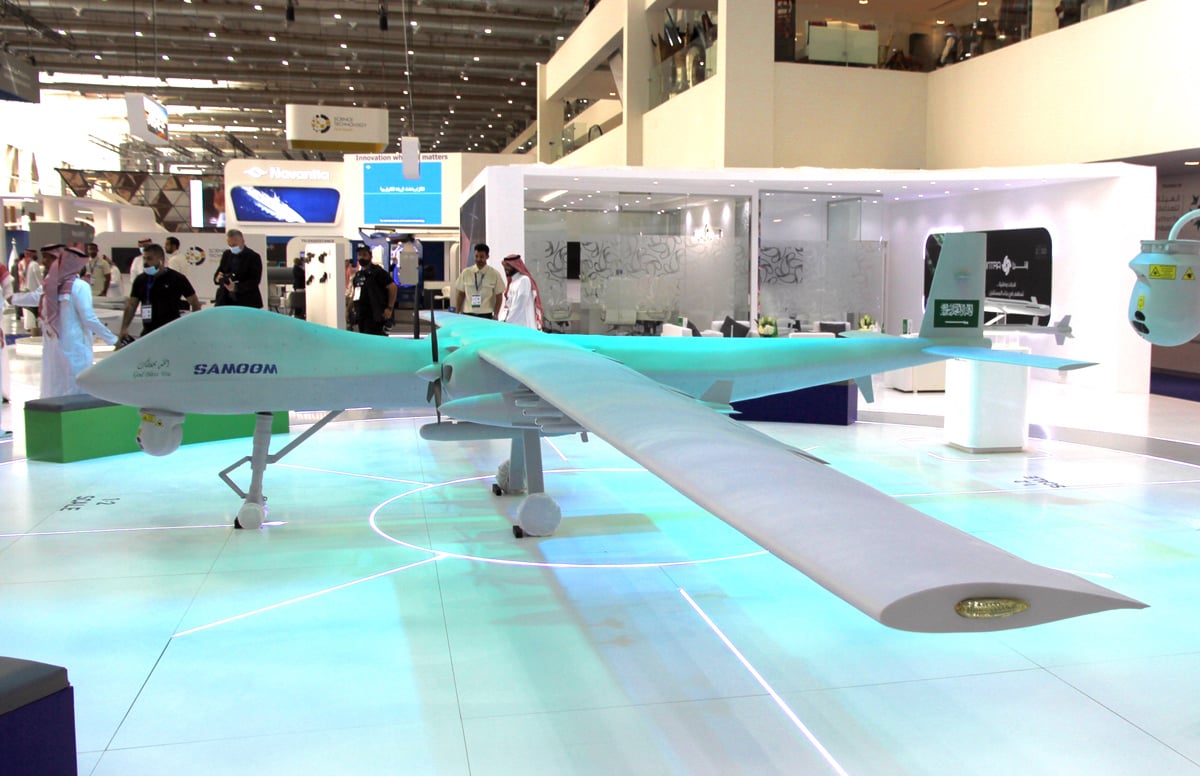Click Here to View This Page on Production Frontend
Click Here to Export Node Content
Click Here to View Printer-Friendly Version (Raw Backend)
Note: front-end display has links to styled print versions.
Content Node ID: 406969
Saudi Arabia's Intra Defense Technologies hopes that its indigenous UAV programs will play a key role in helping the country to achieve its ambitious target of localizing 50 percent of government military spending as part of its wider Vision 2030 effort to diversify the economy and grow non-oil revenues. Crown Prince Mohammed bin Salman has prioritized the localization of defense procurement, vowing that there should be “no arms deals without local content” and favoring the procurement of locally-designed and produced equipment.
Unmanned aerial systems represent a useful and achievable opportunity for local design, development, and production, and Intra already operates a range of unmanned platforms, while providing technical and training services in support of all unmanned products in use in Saudi Arabia. The company has now turned its attention to the design and production of UAV designs, and two of them were on show at the recent World Defense Show held in Riyadh.
The first is the Haboob UAV, a locally-built derivative of the Turkish-built Vestel Karayel-SU that made its maiden flight on April 30, 2014. Intra claims that the Karayel-SU, the armed-extended wing variant, was developed to meet a Saudi requirement with the company’s engineering input. The extended-span wing has end-plate winglets and two hardpoints under each wing, each stressed to carry a 30-kg load. The aircraft can carry a range of Turkish weapons, including Roketsan MAM-L or MAM-C missiles, or 70-mm Roketsan Cirit or Tubitak-SAGE Bozok laser-guided rockets. The Karayel-SU can also be fitted with a 50-kg electro-optical/infrared payload, such as the Hensoldt Argos II EO/IR turret.
The Saudis have made at least one off-the-shelf purchase of an unknown number of Turkish-supplied Karayel-SU UAVs and the Royal Saudi Armed Forces have been operating these aircraft for some time. Three Karayel-SUs are known to have been lost over Yemen since December 2019. The beginning of local manufacture of the Karayel-SU as the Haboob was announced in January 2021. Six aircraft were to be built during 2021, followed by 40 more over the following five years. There have been reports that the Haboob could be exported to Brazil and Kuwait. The aircraft on show at WDS was marked Haboob, but is believed to have been a Turkish-built Karayel-SU, as certification of the Saudi Haboob production line was delayed by the Covid pandemic, and the first aircraft will not be completed until the middle of the year.
Intra’s new Samoom UAV was also on show at WDS in mock-up form. This aircraft is the result of a company effort to produce an indigenous Group 4 UAV. The company says that the concept has already attracted interest from a number of potential customers, including the Saudi Ministry of Defence and the border guard. The twin-engined aircraft has underwing hardpoints for weapons carriage, and will be fitted with Intra’s new AETOS 20-inch IR/EO turret.

As yet, Saudi Arabia’s General Authority of Civil Aviation has no licensing system for unmanned aircraft, so Intra is building the Samoom to NATO STANAG standards, and the aircraft will meet U.S. and European certification requirements. The company began work on the Samoom prototype about six months ago, and expects to roll it out within two years, although Asim Qureshi, Intra’s executive director of technology and engineering solutions hopes to achieve this milestone within 12 months.